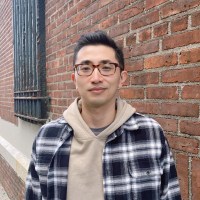More than just Pad Thai and chicken satay, Thai cuisine is supremely varied, with huge variations in regional food and ingredients. For instance, in Northern Thailand, the cuisine is centered on fragrant herbs, grilled meats, and plenty of funky fermented flavors, a stark contrast to the sweeter, stir-fry heavy, Chinese-influenced food of Central Thailand.
To properly highlight this dynamic cuisine, Chef Therdtus “Tony” Rittaprom is on a mission to share his vast library of Thai cooking knowledge. Formerly of the Michelin-starred Zabb Elee in Queens, Rittaprom is a master of Northeastern and Northern Thai cuisine. His newest restaurant is Zabb PuTawn — an Upper East Side restaurant that specializes in items like som tum (green papaya salad) and larb, meat salads packed with chilis, herbs, and roasted rice powder.
Besides showcasing these flavors at his new restaurant, Rittaprom is also headlining a series of cooking classes devoted to Northern Thai food. The first of these two-hour classes will be held from 6 p.m. to 8 p.m. on Dec. 14 and Dec. 15. Prospective students can sign up for the 20-person classes by contacting Zabb PuTawn (located in Manhattan) at (212) 988-8800. Each student will have the opportunity to make four dishes along with two complimentary Singha beers and butterfly pea lemonade. Tuition is $70 for solo students and $120 for couples. The class fee also includes a take-home Zabb PuTawn kit filled with ingredients for the dishes (palm sugar, pla ra, nam prik larb, pork crackling, roasted rice powder, and chili powder) and recipes.
Related Guides
- How the Thai Government Helps Identify Authentic Thai Food
- For A Refreshing And Satisfying Summer Supper, Look No Further Than Larb
- Top Chef Arnold Myint Shows Us the Secret to Authentic Thai Coffee
The Flavors of Northern Thailand

Northern Thai cuisine, Rittaprom’s specialty, is a vibrant blend of fermented flavors combined with a careful balance of spice, acidity, and herbs. While som tum is eaten throughout the country, the dish originates from Isan (Northeastern Thailand). The main components of the salad are a balance of unripe green papaya, palm sugar, fish sauce, chilies, and lime. In Northern Thailand, the flavors of som tum are more intense due to the addition of more chilis and a fermented anchovy paste called pla ra or pu dong, fermented crab.
Another popular item in Northern Thai cuisine is its various meat salads known as larb, which can be made from proteins ranging from pork to catfish. A great example of this is larb moo kua from the Northern city of Phayao. It’s made with a blend of pork, liver, skin, and roasted spices, including wild Northern Thai mah kwan (an orangey, Sichuan peppercorn-like flavor) and dee plee, long pepper. One of Rittaprom’s specialties is goi neur. This raw beef salad is made from chunks of raw beef — Rittaprom uses beef tenderloin — mixed with lime leaf, chili, mint, and khao khua, roasted rice powder. The end result is a brightly flavored salad crisp from lime juices and herbs, all accented with chili peppers and the textural crunch of roasted rice powder. Both of these dishes will be prepared in Rittaprom’s cooking classes.
Chef Rittaprom’s Thai Cooking Tips

One of the most critical tools for making proper Northern Thai food is a krok. This wooden Thai mortar is essential for releasing the essence and flavor of ingredients like garlic, chilies, shrimp paste, and other aromatics without damaging or over chopping them. Although tempting, simply putting these ingredients into a food processor will not produce the same results. If a krok isn’t available, Chef Rittaprom recommends mixing all the ingredients “in a salad bowl but make sure to break the garlic, chilis, and peanuts into pieces beforehand and it’s best to use your hands to try to squeeze everything together so all ingredients blend well.”
To accompany these Northern Thai salads, Rittaprom recommends sticky rice. Not to be confused with the sticky rice in Chinese or Japanese cuisine, this type of sticky rice (khao niao), also known as glutinous or sweet rice, is widely eaten throughout Northern Thailand. The name sweet rice is appropriate as this rice has a higher level of natural sweetness than other comparable rice varieties. This rice is often served in small bamboo baskets and best eaten dipped in various sauces and salads.
Finally, being able to find the proper ingredients is essential to making any of these dishes. Many of these Northern Thai dishes require specialty ingredients which can be tricky to obtain. The best option would be to source them at a specialty Thai store. If you’re located in New York City, Queens is home to a large Thai immigrant community filled with great Thai markets like Pata Market, Thai Thai Grocery, and 3 Aunties. If a Thai-centric market isn’t available in your area, try visiting a Vietnamese, Filipino, or Chinese grocery store as some of these markets will carry similar products. Or, try ordering online from a specialty Asian grocery delivery service like Umamicart.
Som Tum Thai – Thai Papaya Salad

Ingredients:
- 2 cups shredded green papaya
- 2-3 small tomatoes
- .25 cup cut long beans
- 2 tbsp roasted peanuts
- 1 tbsp dried shrimp
- 4 tbsp lime juice
- 2 tbsp fish sauce
- 2 tbsp palm sugar
- Thai chili (as much as you like)
- 2 garlic cloves
Method:
- Pound chili and garlic in krok.
- Add peanuts and dried shrimp and pound gently.
- Add tomatoes and long beans and pound gently.
- Add seasonings – palm sugar, lime juice, fish sauce, and mix until dissolved.
- Add the papaya and mix well.



